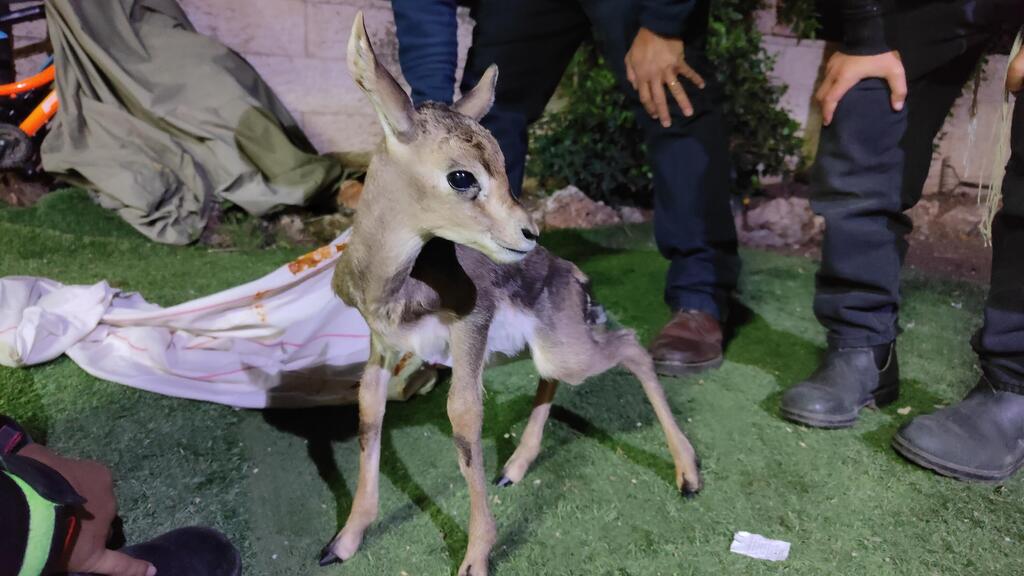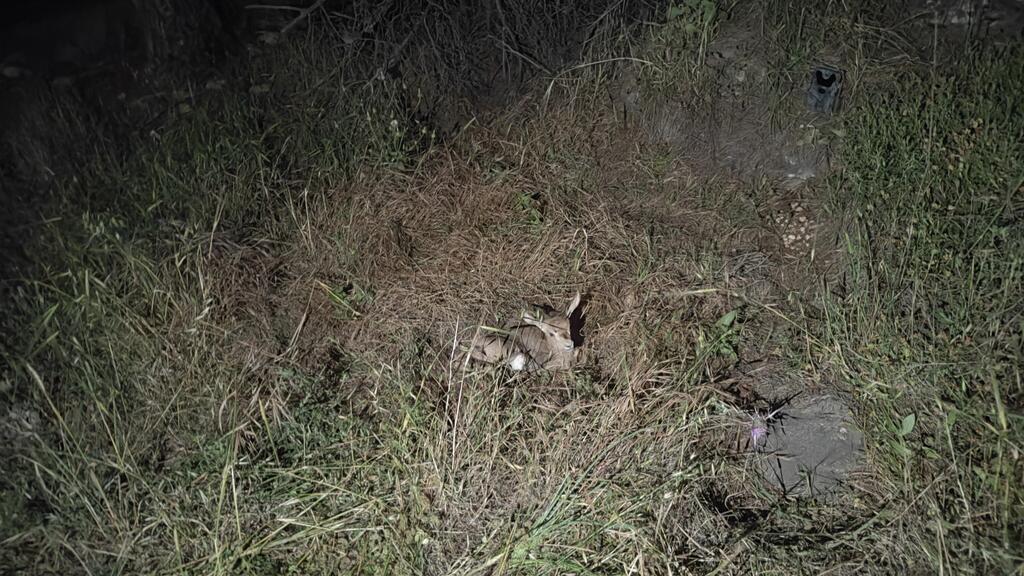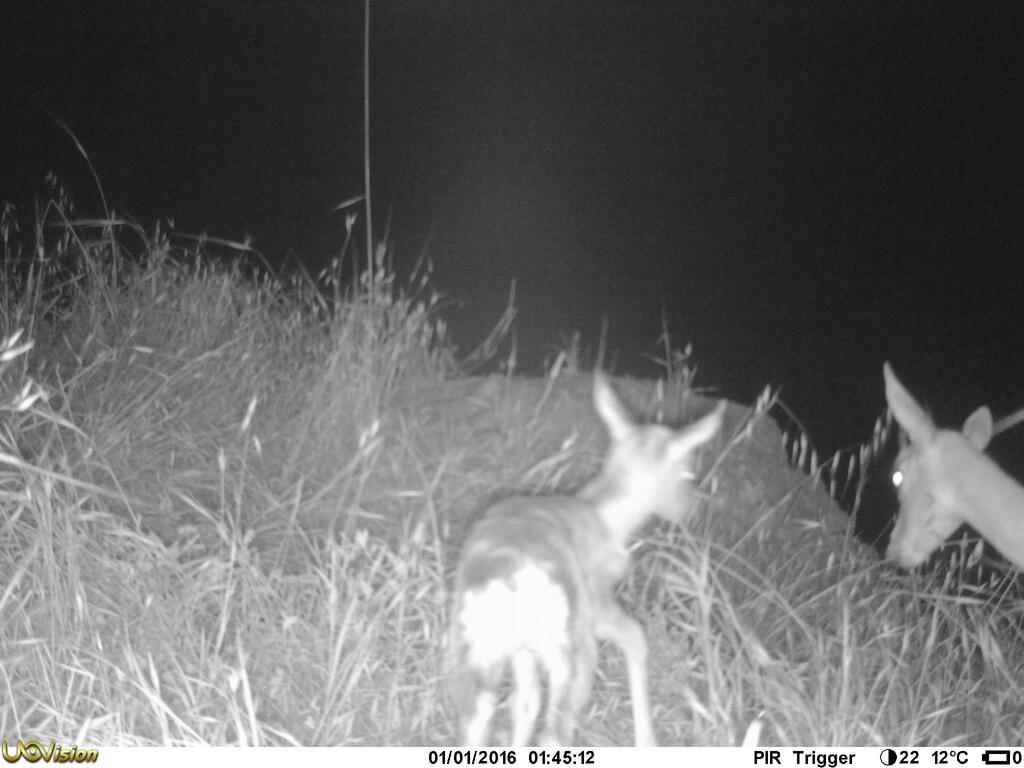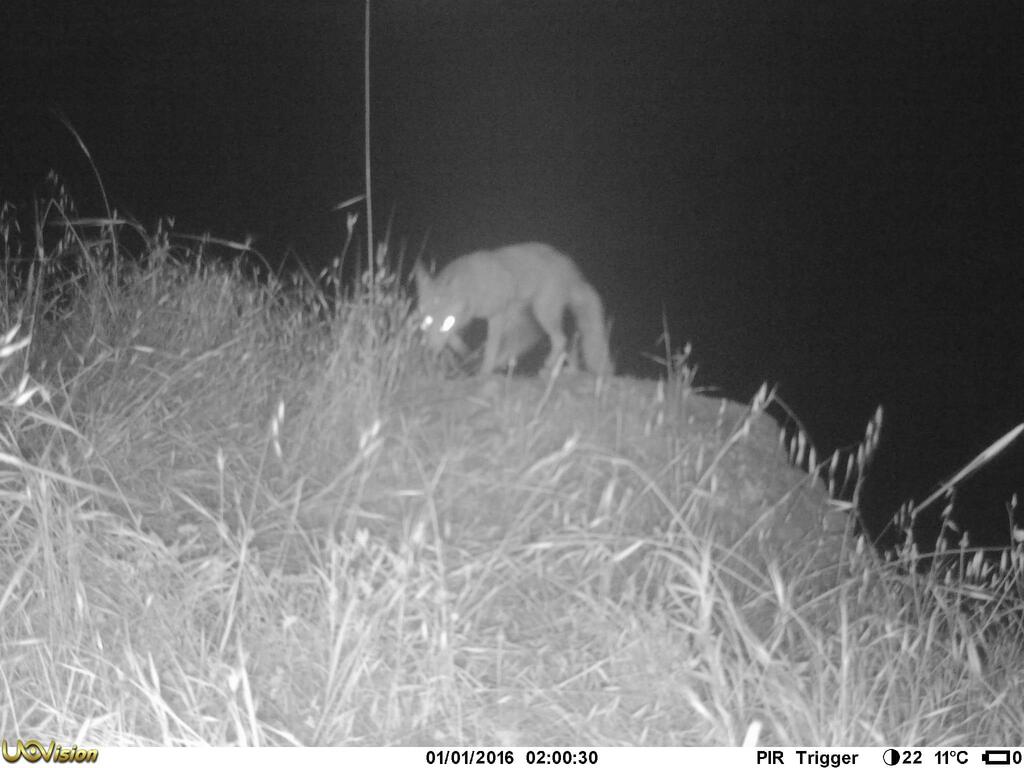Getting your Trinity Audio player ready...
A group of children hiking through the Judean Foothills near Jerusalem noticed a lone fawn.
Related stories:
They thought that the fawn’s mother had abandoned it and decided to take it home with them to help it, not knowing that their altruistic act could have endangered its life. Eventually, with the intervention of the Israeli Society for the Protection of Nature (ISPN), the fawn was returned to its original location.
4 View gallery


The fawn at the home in which it was found by inspectors
(Photo: Yacov Ben Bunan, Israeli Society for the Protection of Nature)
ISPN inspector Yacov Ben Bunan shared the incident on Facebook in order to raise awareness of the issue.
"Shabbat evening, I was already preparing things for the week ahead when I received a notification on WhatsApp from one of the ambulance groups I volunteer with for distressed wild animals,” he wrote.
“They send out calls for animals in need. I saw a picture of a fawn with a request for identification from the operator. I responded and continued with my business. After a few minutes, I decided to ask where the fawn was found, and it turned out to be in my neighborhood.
I immediately called Inspector Eliezer, but he was not in the area, so I went to check the situation myself. With only a three-minute drive from my house, my dad joined me to help. We arrived at the place and learned that the children had gone out for a hike in nature in the afternoon and found a fawn that appeared to be 'abandoned' and picked it up with the intention to help it.”
4 View gallery


The little fawn is left where it was originally found by the children
(Photo: Yacov Ben Bunan, Israeli Society for the Protection of Nature)
After consulting INPA veterinarian Roni King, the group decided that the best course of action would be returning Bambi to its mother.
"So, we took flashlights and returned it to the valley, and the children who remembered the location joined us. I want to remind you that the Israeli gazelle is an endangered species, left only in Israel, so we need this to succeed,” Ben Bunan continued.
“We left the fawn back where it was found together with a trail camera, in the hope that it will give us an idea of what happened at night. We left it there and prayed and hoped that it would work."
The next morning, Ben Bunan returned to the spot where they had left the fawn, only to notice it was no longer there.
4 View gallery


Happy ending! Bambi reunites with its mother
(Photo: Yacov Ben Bunan, Israeli Society for the Protection of Nature)
"I checked the camera, and I found pictures from the night," he recounted. "In the first picture, a fox! I was already worried for the fawn's safety, but I kept scrolling. The fox disappeared from the camera.
And then... Yes! Yes! Yes! Yes! Its mother came back!! It was just under an hour after it was left there. The fox arrived about 15 minutes later, but the fawn was no longer there! What a miracle! What a beauty! How great are Your works, oh Lord! What an amazing nature!"
The Society for the Protection of Nature said that this time of year when the grass is green and tall, gazelles shelter and hide fawns from predators throughout the country.
“The blessed rains in recent months have provided us and the animals with an amazing spring. Nature bursts with a variety of colors, and we cannot remain indifferent to the richness and diversity,” said Amir Balaban, director of the Urban Nature Department at the environmentalist group.
4 View gallery


Hungry, hungry fox
(Photo: Yacov Ben Bunan, Israeli Society for the Protection of Nature)
“If you encounter a fawn during a trip, move away immediately. It is not orphaned. The mother watches from afar and comes to nurse every few hours.
When fawns reach the age of one month, they are strong and fast enough to join the herd with their mother.”

